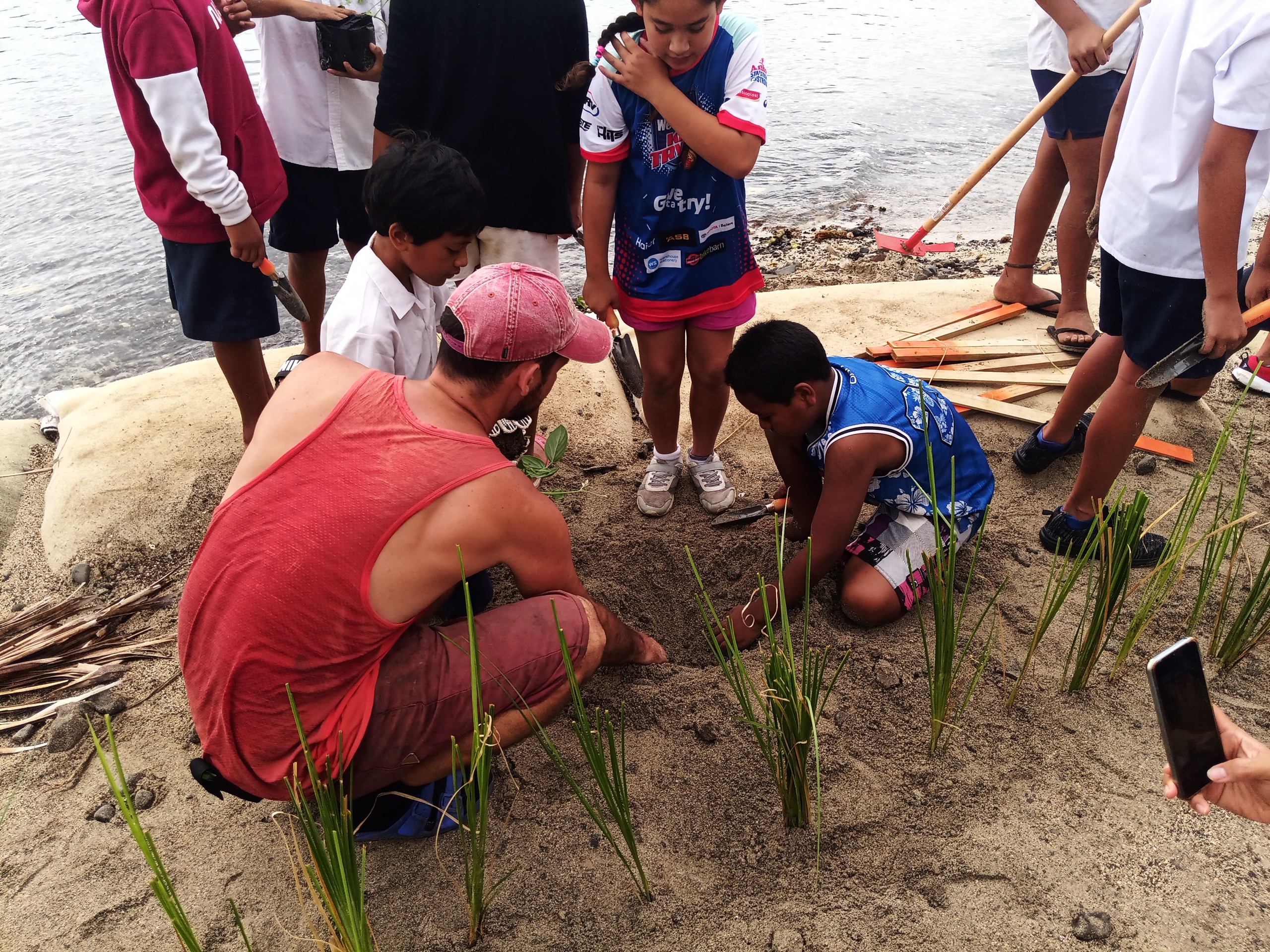Almost 2 years ago to the day we completed construction of a 45m stretch of geotextile sand bag (geobag) revetment wall at Avana Harbour, to help protect the foreshore from erosion. Monitoring of that work over 12 months showed that, while the geobags were doing a good job of preventing erosion from the ocean swell, erosion at the Muri end of the wall was still occurring. This was most likely due to the longshore current coming down from Muri as the water made its way to and out of Avana Passage. To try and solve this problem, we applied for, and received, a small Smarty Grant from the Australian High Commission to add some additional bags to the southern end of the revetment, and to also curve it inland slightly to prevent the longshore current getting in behind the geobags.
After getting technical advice from experienced coastal engineers and the final approvals from the National Environment Service, we completed an extension to this geobag revetment last week. We used the same company as 2 years ago, S and T Contractors, to do the work of filling, placing and moving the nine additional bags into their new position.
On Wednesday morning this week students from Apii Takitumu and Apii Te Uki Ou joined us in a mutually beneficial exercise, planting the foreshore behind the wall to help its stabilisation. The project benefited from having many young enthusiastic hands making light work of digging and planting, and the students got the opportunity to learn from experts on some innovative solutions to coastal erosion.
The students helped us to plant vetiver grass, beach vines and some coastal trees to help hold the sandy soil together during any high water events and during torrential rain. Muri Environmental Care provided the planting material and helped out on the day instructing the students in planting techniques to give the plants the best chance of survival. Landowners Ngati Manavaroa were also on hand to help out with the work.
Steven, a student from Apii Te Uki Ou, when asked what he learned from the day, said “the plants that we planted today will help hold the sand in the future, after the sand bags eventually get damaged or rot away”. That really does sum up the project in one sentence.
Since we started this project 2 years ago there has been a lot of interest from others both in Rarotonga and from the outer islands in this geobag technology. In particular, the large scale erosion caused by sustained high water levels around Titikaveka back in July this year has prompted a lot of interest from beach front tourist accommodations.
Our door is always open if anyone would like to learn more about this project, or in fact any of the other projects we are involved in, including rat eradication, sustainable tourism, waste management and campaigning for a healthy ocean.
Te Ipukarea Society would like to thank all those involved in this pilot project, including the Australian High Commission in Rarotonga, Muri Environment Care Group, Apii Takitumu and Apii Te Uki Ou, S and T Contractors, Ngati Manavaroa, the National Environment Service, our engineers Paul Maoate and Matt Blacka and Cook's buses for the student transport.

